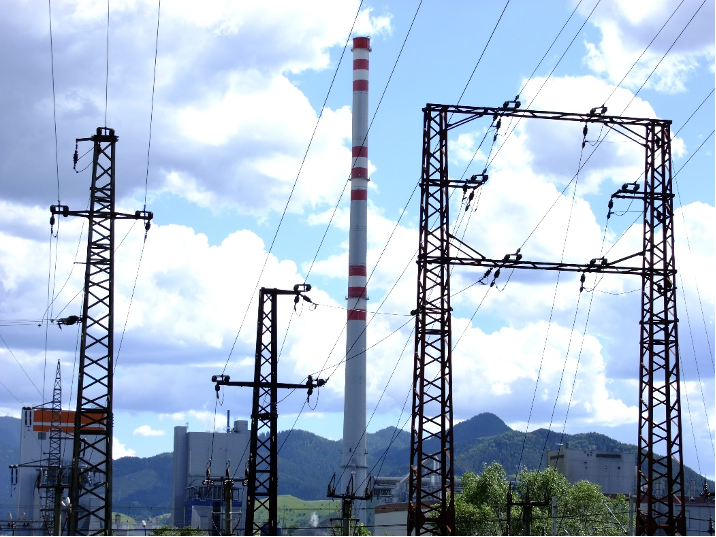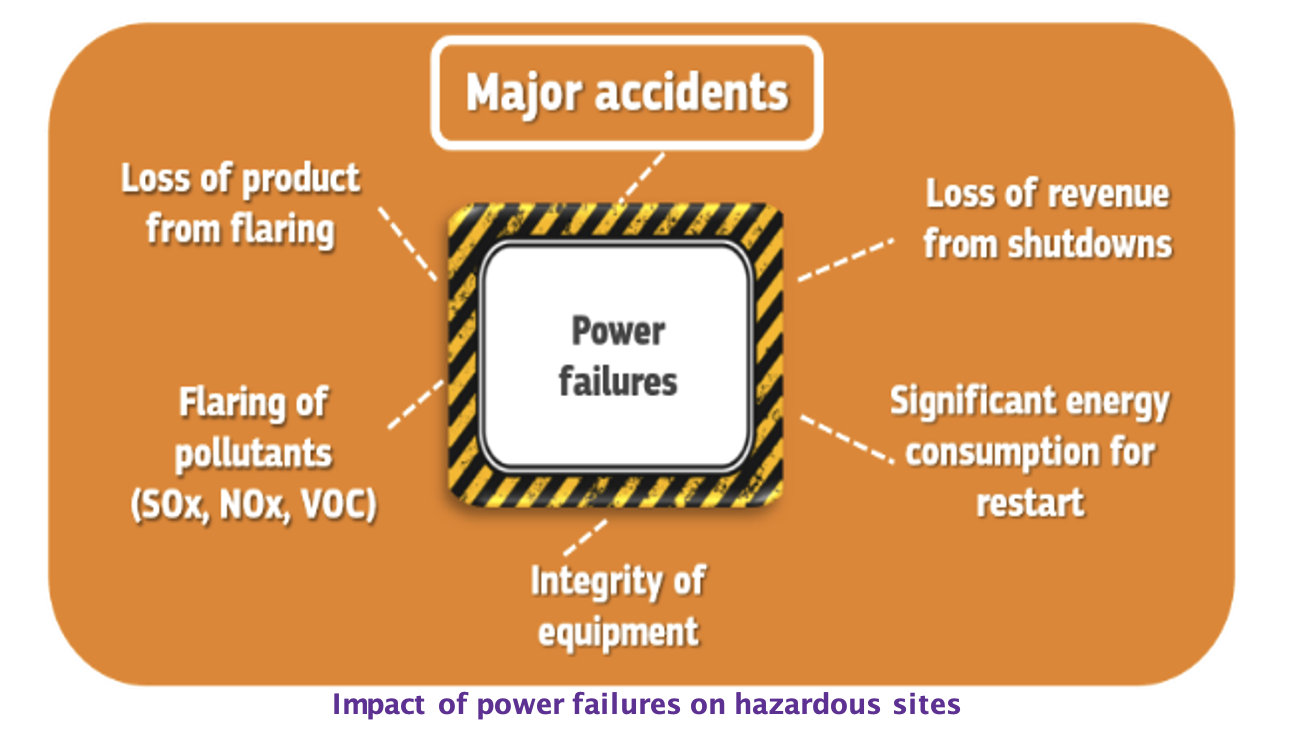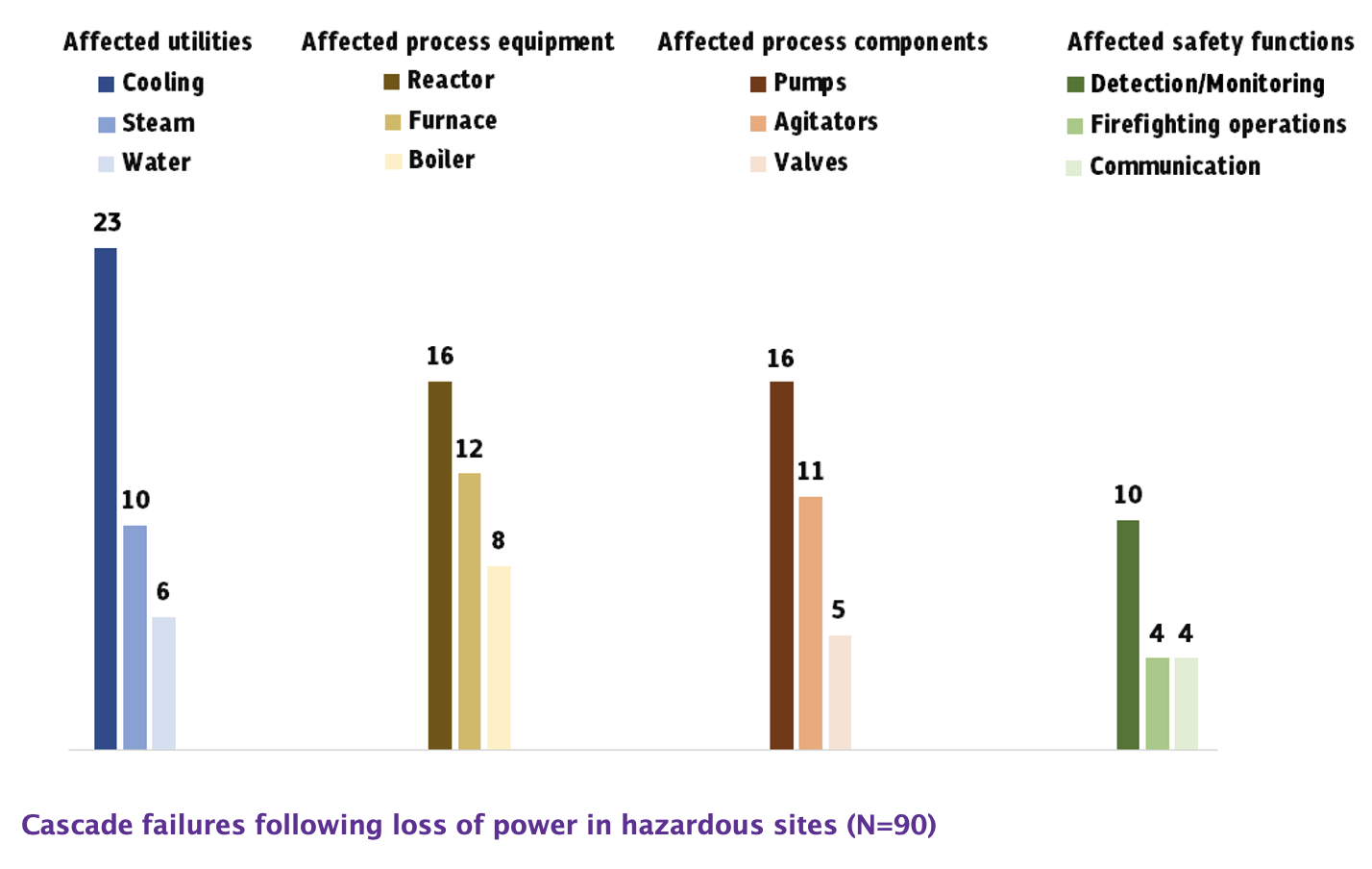Power failures on hazardous sites and implications for the Green Deal

date: 03/03/2022
As the European Commission works towards the implementation of the Green Deal, reducing dependence on carbon-based fuels, its dependence on electric power is expected to grow substantially. Access to energy sources is critical for all industries, but in particular, for hazardous sites and critical infrastructures where an unexpected interruption of power can cause severe harm to humans, and significantly affect the economic and environmental health of communities in the vicinity.

The JRC’s Major Accident Hazards Bureau (MAHB) studied reports of 90 chemical incidents from multiple industrial sectors to understand how and why power supply failures cause chemical accidents and identify practices to prevent them and mitigate their effects. The results of this study are published through the annual Lessons Learned Bulletin available on MAHB’s publications portal.
Power failures on hazardous sites have resulted in 21 fatalities and over 9,500 injuries worldwide since 1981, as well as significant property damage and production loss from resulting fires and explosions. Toxic releases with significant offsite impact on human life were also reported in many incidents.

Loss of power can result in a cascade of failures in a facility, such as loss of steam and subsequent loss of temperature and pressure monitoring and control, resulting in loss of containment. Measures to mitigate the impacts should kick into action if an unintended release should occur. However, the study showed that in many instances, in the absence of a power source, safety equipment failed to function without electricity, including gas detectors, hydrants and sprinklers, as well as communication lines needed to alert responders and the public.
The JRC study presents several accident cases providing lessons learned to support risk assessment and risk management decisions on hazardous sites. The findings should also be taken into consideration by public utilities and government authorities that make decisions about the public power supply. Implementation of the Green Deal will also have to take into account the need for a reliable and continuous power supply for a number of reasons, including the avoidance of industrial accidents, as the resilience of the power supply infrastructure is highly interconnected with the overall resilience of hazardous sites.
